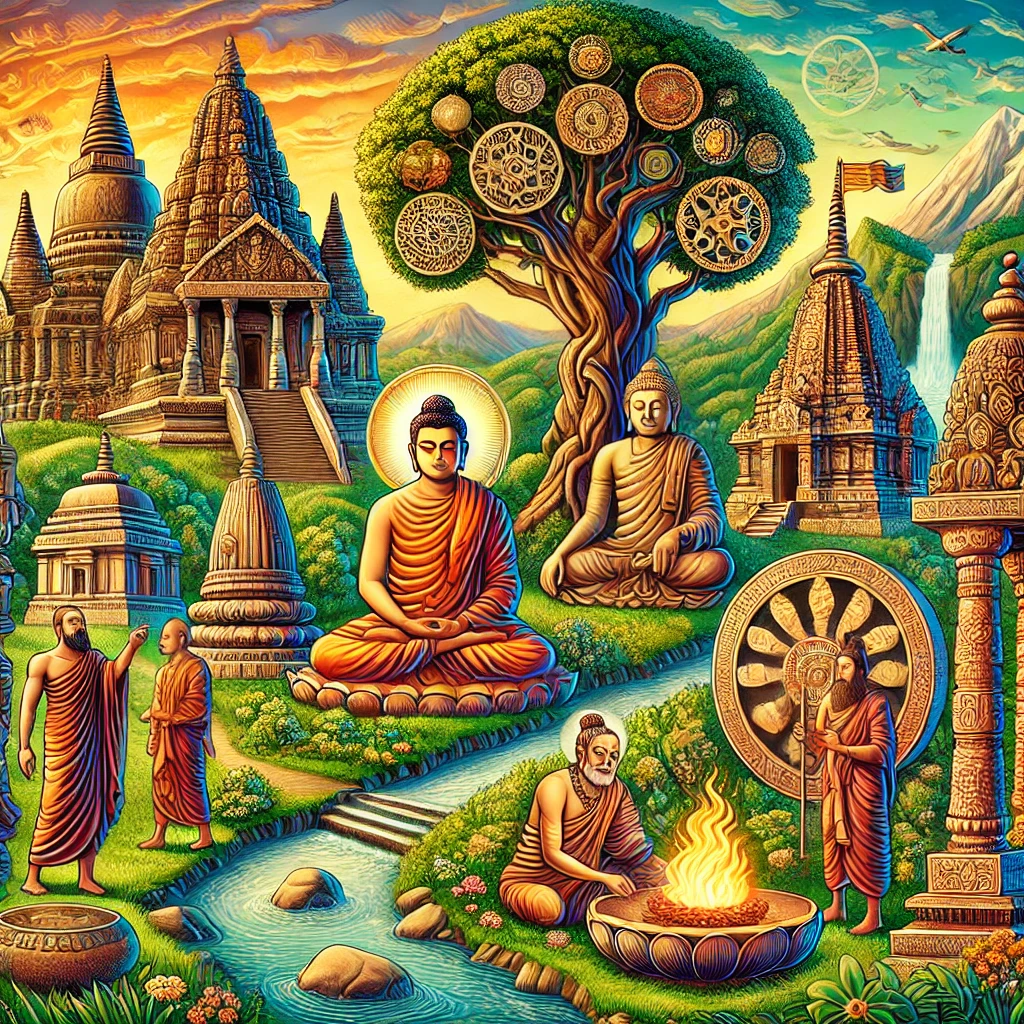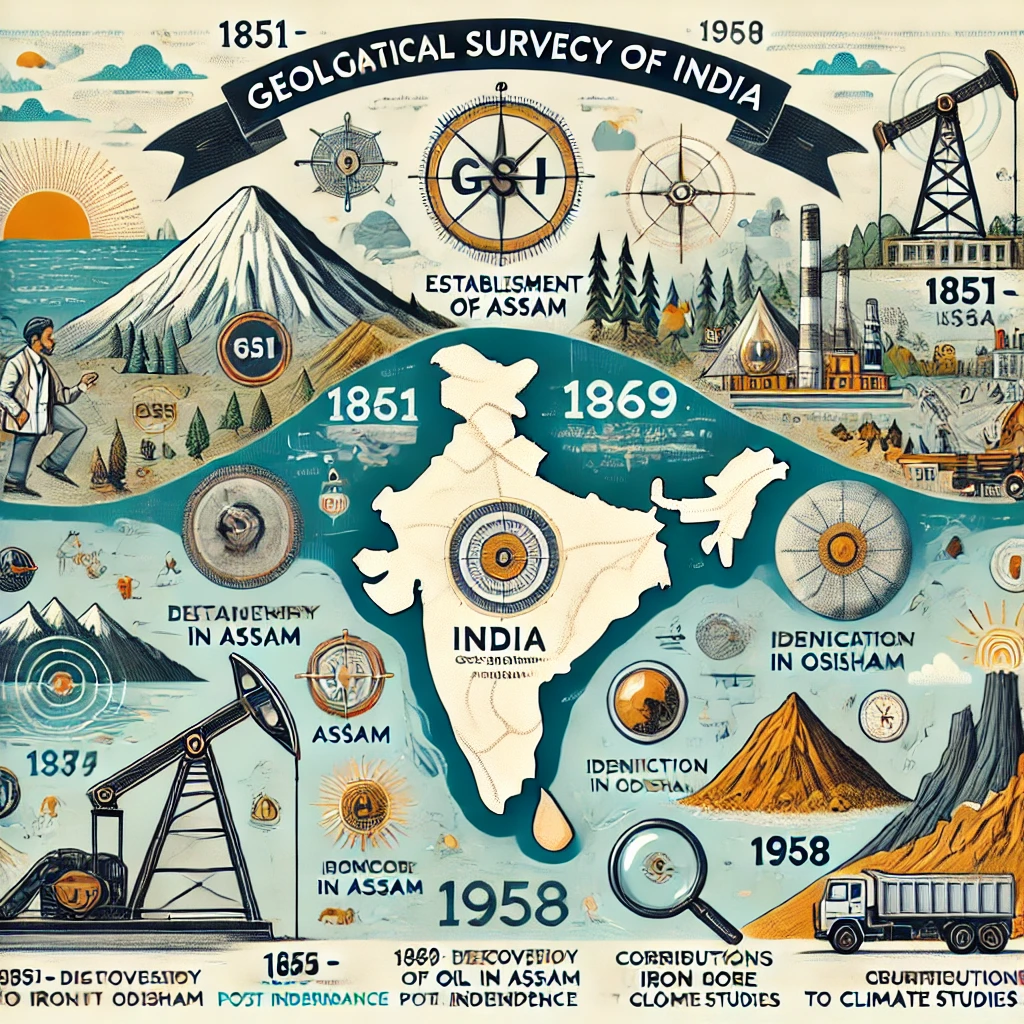The Mauryan Empire, established in 322 BCE by Chandragupta Maurya, stands as a pivotal chapter in ancient Indian history. Spanning from 322 BCE to 185 BCE, it was the first empire to unify most of the Indian subcontinent, leaving an indelible mark on the region’s political, cultural, and social landscape. Understanding the Mauryan era is crucial for competitive exams, as it encompasses significant developments in governance, economy, religion, and art.
Human Metapneumovirus (HMPV) in China: A Growing Concern
Founding of the Mauryan Empire
Chandragupta Maurya, with the guidance of his mentor Chanakya (also known as Kautilya), overthrew the Nanda Dynasty to establish the Mauryan Empire. Chanakya, a master strategist and author of the Arthashastra, played a pivotal role in shaping the administrative framework of the empire.
Key Rulers and Their Contributions
- Chandragupta Maurya (322–298 BCE):
- Administration: Established a centralized government with a complex bureaucracy.
- Expansion: Extended the empire across northern India and into parts of present-day Afghanistan.
- Legacy: Laid the foundation for a unified Indian state.
- Bindusara (298–273 BCE):
- Governance: Maintained the vast empire inherited from his father.
- Expansion: Extended the empire further south into the Deccan Plateau.
- Ashoka the Great (273–232 BCE):
- Kalinga War: His conquest of Kalinga resulted in massive casualties, leading to a profound transformation.
- Embrace of Buddhism: After the war, Ashoka adopted Buddhism and promoted non-violence and dharma (moral law).
- Edicts: Commissioned inscriptions (Rock and Pillar Edicts) across the empire to disseminate his policies and ethical guidelines.
Administration and Governance
The Mauryan Empire: A Comprehensive Overview for Competitive Exams
The Mauryan administration was noted for its efficiency and structure:
- Centralized Authority: The emperor held supreme power, supported by a council of ministers.
- Provincial Governance: The empire was divided into provinces, each overseen by a governor.
- Revenue System: Implemented systematic taxation on agriculture, trade, and commerce.
- Judicial System: Established courts and legal procedures to maintain law and order.
Economic and Cultural Achievements
- Trade and Commerce: The Mauryan Empire facilitated trade routes, both internal and external, enhancing economic prosperity.
- Infrastructure: Developed roads, including the precursor to the Grand Trunk Road, and built irrigation systems.
- Art and Architecture: Commissioned stupas (e.g., Sanchi Stupa), pillars, and rock-cut caves, reflecting Buddhist themes and imperial grandeur.
Decline of the Mauryan Empire
Following Ashoka’s death, the empire faced challenges:https://learn.srstudy.com/current_affairs
- Weak Successors: Subsequent rulers lacked the competence to manage the vast empire effectively.
- Administrative Overreach: The extensive bureaucracy became difficult to sustain.
- Regional Rebellions: Provinces began asserting independence, leading to fragmentation.
By 185 BCE, the last Mauryan ruler, Brihadratha, was assassinated by his general, Pushyamitra Shunga, who established the Shunga Dynasty.
Significance in Competitive Exams
The Mauryan era is a frequent topic in competitive examinations. Here are some previous years’ questions to illustrate its importance:
- Which dynasty ruled over Magadha after the Nanda Dynasty?
- Answer: Maurya Dynasty.
- Who was the founder of the Maurya Dynasty?
- Answer: Chandragupta Maurya.
- Who was the author of the Arthashastra?
- Answer: Kautilya (Chanakya).
- Which Mauryan ruler is associated with the spread of Buddhism?
- Answer: Ashoka the Great.
- What was the outcome of the Kalinga War during Ashoka’s reign?
- Answer: Ashoka embraced Buddhism and adopted non-violence.
- Which of the following was the first empire to stretch from the Bay of Bengal to the Arabian Sea?
- Answer: Maurya Empire.
- Who was Ashoka’s contemporary king of Ceylon?
- Answer: Devanampiya Tissa.
- During the reign of Chandragupta Maurya, Pataliputra was administered by a board consisting of how many members?
- Answer: 30 members.
- Who was the mentor of Chandragupta Maurya?
- Answer: Chanakya (Kautilya).
- Which dynasty ruled over Magadha after the Mauryan Dynasty?
- Answer: Shunga Dynasty.
General Questions
- Who was the founder of the Mauryan Empire?
- Answer: Chandragupta Maurya.
- Which text outlines the administrative structure of the Mauryan Empire?
- Answer: Arthashastra by Chanakya.
- What was the capital of the Mauryan Empire?
- Answer: Pataliputra (modern-day Patna).
- Which ruler is associated with the Kalinga War?
- Answer: Ashoka the Great.
- What is the significance of the Sanchi Stupa?
- Answer: It is a Buddhist monument commissioned by Ashoka.
- Who was the Greek ambassador in the court of Chandragupta Maurya?
- Answer: Megasthenes.
- What book did Megasthenes write about India?
- Answer: Indica.
Specific Questions about Administration
- What was the primary source of revenue in the Mauryan Empire?
- Answer: Land revenue.
- What was the name of the department responsible for trade and commerce in the Mauryan administration?
- Answer: Panyadhyaksha (Superintendent of Commerce).
- Which officer was in charge of taxation in the Mauryan Empire?
- Answer: Samaharta.
- What was the role of Dhamma Mahamatta under Ashoka?
- Answer: To spread the message of Dhamma and ensure ethical governance.
- Which Mauryan ruler introduced a system of espionage?
- Answer: Chandragupta Maurya, as advised by Chanakya.
Questions about Ashoka
- Which edict mentions Ashoka’s remorse after the Kalinga War?
- Answer: Rock Edict XIII.
- What is the emblem of modern India derived from Ashoka’s period?
- Answer: The Lion Capital of Ashoka at Sarnath.
- What were the three guiding principles of Ashoka’s Dhamma?
- Answer: Non-violence (Ahimsa), tolerance, and welfare of all beings.
- Which countries were influenced by Ashoka’s Buddhist missions?
- Answer: Sri Lanka, Nepal, Myanmar, and Southeast Asian regions.
- What was the name of Ashoka’s son who spread Buddhism to Sri Lanka?
- Answer: Mahinda.
- Who was the contemporary Sri Lankan king during Ashoka’s reign?
- Answer: Devanampiya Tissa.
Art and Architecture
- Which pillar is the most famous among Ashokan pillars?
- Answer: The Sarnath Pillar.
- What material were most Mauryan sculptures made of?
- Answer: Polished sandstone.
- Which Mauryan structure is considered the earliest example of rock-cut architecture in India?
- Answer: Barabar Caves.
Economic Questions
- What was the primary mode of currency in the Mauryan Empire?
- Answer: Punch-marked silver coins.
- Which trade route developed significantly during the Mauryan period?
- Answer: The precursor to the Grand Trunk Road.
- What was the main export during the Mauryan era?
- Answer: Spices, textiles, ivory, and precious stones.
Decline of the Mauryan Empire
- Who was the last ruler of the Mauryan Empire?
- Answer: Brihadratha.
- Who assassinated the last Mauryan ruler?
- Answer: Pushyamitra Shunga.
- What were the key reasons for the decline of the Mauryan Empire?
- Answer: Weak successors, administrative overreach, and regional rebellions.
Miscellaneous Questions
- Who succeeded Alexander the Great in the northwest, paving the way for Chandragupta’s rise?
- Answer: Seleucus I Nicator.
- What was the outcome of the treaty between Chandragupta Maurya and Seleucus I?
- Answer: Chandragupta gained territories in exchange for 500 war elephants.
- What was the official language used in Ashokan inscriptions?
- Answer: Prakrit, written in Brahmi script.
- Which Ashokan edict mentions the names of Greek kings?
- Answer: Major Rock Edict II.
- What does the term “Dharma” mean in Ashokan inscriptions?
- Answer: Ethical law or righteous conduct.
How to Use These Questions for Preparation
- Focus on the key events and personalities of the Mauryan era.
- Learn the administrative structure and innovations introduced by the Mauryas.
- Pay attention to Ashoka’s policies, edicts, and contributions to Buddhism.
- Practice map-based questions on the extent of the Mauryan Empire.
- Memorize important dates, texts, and archaeological findings.
By preparing these questions thoroughly, you will be well-equipped to tackle any related queries in competitive exams.
(SR Study) Preparation Tips:-
- Read Historical Sources: Start with NCERT History textbooks (Class 6-12).
- Focus on Timeline: Memorize key events in the Mauryan era (322 BCE – 185 BCE).
- Highlight Key Rulers: Emphasize the contributions of Chandragupta, Bindusara, and Ashoka.
- Practice Questions: Use previous year papers from UPSC, SSC, RRB, and state-level exams.
- Revise Administrative Features: Focus on the Mauryan system of governance, revenue, and justice.
- Art and Architecture: Understand the significance of Ashokan Pillars and stupas.
- Mock Tests: Attempt history-specific mocks to solidify your preparation



